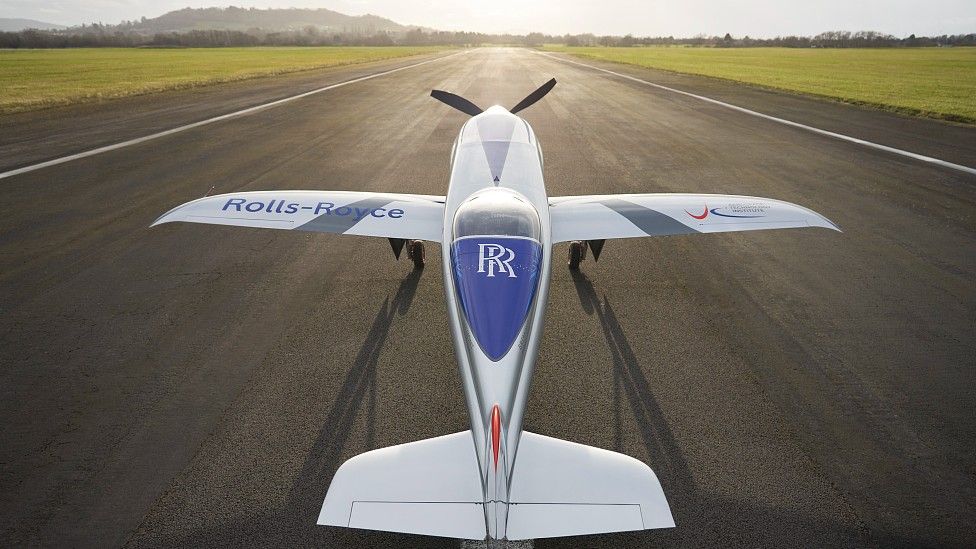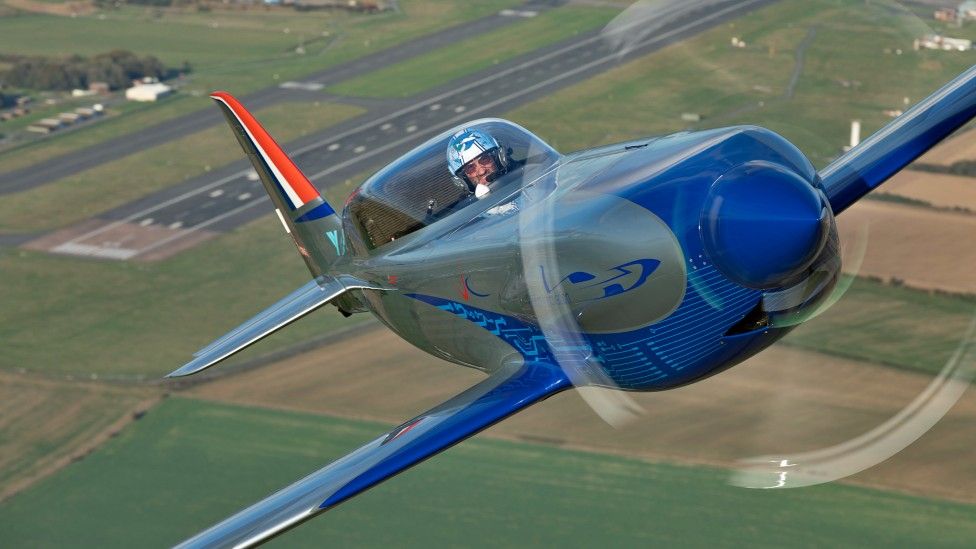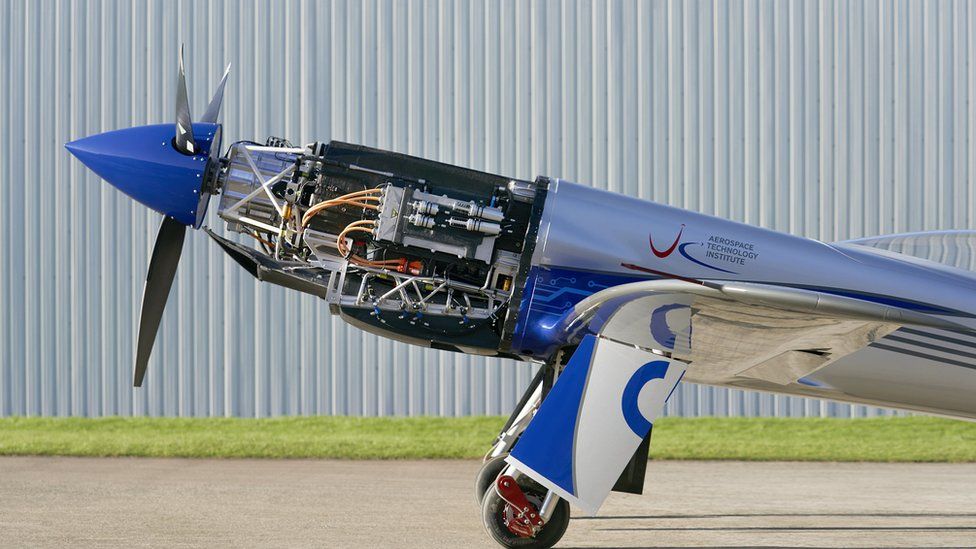-
Posts
2,670 -
Joined
-
Last visited
-
Days Won
32
Content Type
Profiles
Forums
Gallery
Downloads
Blogs
Events
Store
Aircraft
Resources
Tutorials
Articles
Classifieds
Movies
Books
Community Map
Quizzes
Posts posted by kasper
-
-
1 hour ago, Ian said:
The easiest way to make this lighter would be to go on a diet. You're pushing the boundaries of the technologies, it sounds interesting good luck with it. Does your BMS monitor cell termperature?
If you get your estimated 2 hours with your setup how long would a charge take a between flights?
Im a middle aged man who has the same trouser size as I did at 21. Losing weight is not in my mindset I’m happy with not gaining more.
my bms is off the shelf and has 2 temp sensors …. I know that is not enough when I’m splitting the pack into three areas in the airframe but the draw on the pack is well within the specs for the batteries so I’m considering this area of management.
as for recharge it’s still an open item. The charger is NOT going in the plane and I’m still working on options. The hangar/shed has 6kw of solar and 25kwh of agm batteries so the slow recharge from that alone will sit at around 5-6hrs to 80% as I can’t push too much current around without losing efficiency or getting heat issues on recharge.
not sure what I’ll do if it works and I want to go somewhere. Can’t really pull over to a Tesla supercharger 🤣
but this is not intended to be a go somewhere plane. It’s my let’s see if I can do this plane. I have other planes with IC engines to go somewhere in or fly when the sapphire is on recharge.
-
 1
1
-
-
9 minutes ago, FlyBoy1960 said:
You are lighter when you land with flat batteries (in theory)
well IF e=mc^2 is perfectly applicable my 14.5khw batteries will be about 580 nanograms lighter ... that is 580 time a nanogram
a nanogram is 1 thousand millionth of a gram ... that is 1 / 1,000,000,000,000 of a kilogram ...
Lets just say they weigh the same for all practical purposes.
-
18 minutes ago, RossK said:
Hi Kasper, you know what your talking about, your numbers are close!
they claim a 92kWh battery pack, with a mass of 353kg.
Yes BUT they are not being fully honest ... 353 kg is the bare mass of the cells themselves not the weight of the assembles battery packs.
There will be additional weight in the airframe that is required to assemble a useful battery pack even an air cooled system like the Ducati or my system.
The thing that was interesting to me in the linked youtube video was the clear discussion of how a battery capacity more closely matched to the draw is supportive of an aircooled/low weight battery pack compared to high draw packs that really will need liquid/active cooling etc.
It was one of the reasons I chose a relatively large capacity battery pack as a starter for the airframe install system ... I ran a test setup of the motor on a small capacity test battery pack and was not impressed with how quickly and how hot the pack got ... and even less happy with having cooked a new battery pack so badly it was scrap.
-
And the reason this is all terribly hard to do ... energy density and conversion to work.
I have an electric motor and control system that is VERY efficient in taking kw in the battery and converting it into rotational kw at the prop ... I'm looking at around 90-95% efficient.
That means my 14.5kwh of battery can be converted into 13kw of work ... and that 13kw of work weighs 88kg. That 13kw will keep me up around 2hrs.
A small two stroke petrol engine to do the same work runs at 9lph in cruise ... and that engine is approx 9kw of power in cruise to the redrive which as a belt is around 90% efficient so its near 8kw of work. So 2 hrs of petrol is 18L ... and that is 13kg.
Battery system is 6.76 times the installed weight of the petrol equivalent ... and believe me working out how to shove nearly 90kg of weight into an airframe that is only 90kg AND keep the CofG in an acceptable location AND still have room for my well padded body has been interesting.
Yes the electric motor is lighter than the IC engine but at the low power end of aircraft the saving on motor is not really helpful to offset against the battery weight. This is why small power systems will be very low endurance for a long time in my opinion.
-
31 minutes ago, spenaroo said:
... As for the battery pack, it’s comprised of 1,152 cylindrical 21700 type cells – the same cells you’ll find in a Tesla. It weighs 242.4 lbs. (110 kg) and has a capacity of 18 kWh. ...
Hmmm I'm using LIFEPO4 chemistry which is not the lightest lithium battery (but quite a bit less flammable) and I have a 14.5kwh battery setup for the Sapphire that with the BMS weighs in at 88kg before I start slotting it around the airframe.
Prorata for the capacity difference my setup is exactly the same kg/kwh as Ducati get ... maybe I am on the right track.
Admitted my 88kg does not include the battery boxes I've built into the new wing and behind the seat but they are all vac bagged carbon and very light so my system is stacking up so far.
My concern with the Eflyer is that they are going to be using a lot of power even in economical cruise to stay up there so they will need lots of battery ... and these things are still heavy per kwh.
Just think
- Eflyer has 110kw motor,
- guessing it uses 30-40kw to fly at endurance
- they claim 3hrs endurance
- they need around 90-120kwh of battery
- LIFEPO4 systems weigh 6kw/kwh
This would imply a battery pack of around 540-720kg
That is not believable.
Even if using really good (very flammable) lithium batteries its not much better - the current Tesla 100kwh lithium pack comes in at 625kg.
I just cannot see how they can possibly get the performance they claim out of the available technology.
-
 1
1
-
 1
1
-
 1
1
-
-
56 minutes ago, RossK said:
Still around as of August last year.
3hrs endurance @ 73knots, or 220nm range, I'm guessing range reduces at higher speeds.
204kg payload - remember, no fuel has to be added. 2 x 85kg passengers leaves 34kg for baggage.
😂 😂
oh bless - you honestly believe the average Joe n Jill are 85kg.
and I followed this development for years and never heard of any flight more than a couple of circuits so I believe nothing about it’s claimed endurance or range.
-
 1
1
-
 1
1
-
-
The link works …. It’s just it’s a link to THIS post so not useful.
as this airframe has been knocking around for 6 yrs and has been through company mergers and a lot of money and two motor providers I’d like to know if the post was for something new.
it never really added up when I read about it
- only 200kg payload so toothbrush and credit card if you have a passenger.
- never clear how much battery capacity they actually have to give the claimed 3.5hrs and at what actual cruise/reserve the system was
-
Respect. I’m still hobbling along on my avmap geopilot ii. I’m sure it’ll die one day.
From experience avmap support in oz is poor and give the IV was retired and replaced with the V you are likely left with replace or attempt to get it repaired independently eg the spotty goth running your local phone and tablet repair store. My local guy is called Callum 😛
-
Morane-Saulnier Epervier or sparrow hawk. MS1500. Was prototypes only
-
 1
1
-
-
Physically can you swap them? Yes - they have the same mast bolt patterns.
Technically should you swap them - maybe not - the hang angle between the two airframes is slightly different and your thrust line with reference to the hang angle makes a BIG difference to handling on a trike and I am not certain the thrust lines will be maintained between the two airframes.
Legally are you allowed to swap them - NOT WITHOUT AIRBORNE CONFIRMING IT IS WITHIN THE DESIGN CERTIFICATION AND NOT UNTIL YOU HAVE FOLLOWED THE RAAUS/SAFA MODIFICATION PROCESSES AND SIGN OFFS.
-
 1
1
-
-
Spacey,
just use an ecs.
What you are effectively describing is the old mechanical motor controllers as used in trams and trains through to the late 80’s. You get jumpy power moves and your described system of segregating batteries is even worse because you’re leaving capacity in batteries not in the circuit and available if needed. Plus if course mechanical switching is sparks-r-us on contactors.
just use an ecs and all of the issues with your proposed system go away and you get full smooth power and access to every drop of battery capacity.
-
 1
1
-
-
2 hours ago, FlyBoy1960 said:
just asking, why do you think you can get away with a 48 V motor/battery when everybody else in the electrics is using nearly 10 times this voltage as a minimum ?
It’s not a matter of getting away with anything. I’ve set a $ budget to achieve a system of x kw power with y kwh of storage.
the system I’m going with meets my specs of need so 👍
I did seriously consider a twin rotomax 150 set up but the cost of two controllers and motors pushed the drive component to nearly as much as the battery/bms/charge half and I’m not spending that much.
-
3 minutes ago, spacesailor said:
100 volts max!.
That means lots of 3.7 v , or half that with 7.2 v X 14 for the max takeoff power.
It puts the retail price of battery,s into the crazy bin.
spacesailor
Not really. The V into the motor is the V out of the controller not the V out of the battery.
it’s entirely possible to have a 48v battery run a 100v motor … not the most efficient but it can be done.
my set up is 48v all through and it’s reasonably efficient electrically speaking … just not efficient $$$$ wise because it’s three times the cost of an IC Paramotor engine of the same power. It’s just smoother, quieter and less polluting at pint of use.
-
 1
1
-
-
18 minutes ago, spacesailor said:
Just looked at a 35kw brushless motor, but there was no voltage mentioned.
How do you find the right battery to fit a dc motor, without the manufacturer stating , volts.
Mp 238 50. Max amps 350. Weight 15 kg.
spacesailor
If you wander around alibaba for electric motors scrolls down and the details are there
Model No: MP238/50 70KV brushless motor
Max voltage: 100V
Max current: 350A
Rated current: 170A
No load current: 12..2A
Resistance: 0.0052ohm
Dimension: 238mm*50mm
Weight: 5kg
ESC: 120V 500A
Thrust: 85kg-90kg
Propeller: 4213 or 5095 carbon fiber propeller
and the real challenge is to get a really good esc to control the motor. Core motors are relatively simple manufacturing challenges and quality does not cost a lot in a motor.
and 15kg for this output is really heavy. That power output for a well designed outrunner should be half of that at worst. This list from alibaba shows it at 5kg which is believablethe controller on the other hand is a nightmare of electronic unicorn dust covered magic … unless you are THAT one forum member who could design and knock one up with one hand behind his back.
a good controller has to both be designed well and manufactured well or you are a very heavy glider far too often for my liking.
cheers
-
 1
1
-
-
11 hours ago, kgwilson said:
The BYD blade battery is not a good shape to power aircraft. It is 905mm long x 118 wide & 13.5 high (thick), 3.2 volts with a capacity of 202 Ah. The Tesla type of battery of multiple cells in 18650 (18mm x 650mm), 21700 & 46800 sizes can easily be configured in to shapes that fit a given volume. 18650 Li-ion batteries have been around for a fair while now but the improved LiFeP04 type it is safer as it won't explode or catch fire like standard Li-ion, it is cobalt free, can be discharged fully without degradation & recharged 3-5000 times. but has lower energy density that Li-ion.
In any aircraft application weight is the main problem.
Don’t forget that lithium batteries - most chemistries - are solid state batteries and can be mounted in any orientation. Laying a 13.5cm battery on its side and making a LONG battery box that runs the batteries out into the wing will work. Allows the weight to be designed into the airframe at a nice position for core cofg management and weight Int eh wings can be nice to help with structural loads as it can assist with lower bending moments to design to at the wing/fuselage connections.
-
 3
3
-
-
13 hours ago, turboplanner said:
Do you have any details of these in a size that might be suitable for a Drifter or Trike size aircraft?
I’m going lifepo4 for cost/flammability concerns. They can if ruptured and shorted vent gas under pressure and burn BUT they are not like other lithium chemistries on risk.
im going for a 48v 16 cell setup for 14.59kwh capacity. It’s heavy but with the bms and all custom connections and boxes it comes in at 88kg and will only fly me for an est. 2hrs.
the engine, controller, cables etc come in at 9kg so my power plant swap will see 47kg replaced with 97kg … I’m adding 50kg of weight and losing 1hr of range but for pootling around at 50mph I am happy enough.
the shed here has 6.5kw of solar on it and it’s easy to cut the current off grid system into the plane and extend the battery - I’ll use it as system storage In the plane when I’m not flying and will get a Couple of hours flying a week out of it for no cost from the grid.
im a cheap skate - the shed off grid system is recycled from old bits collected from solar installers replacing systems and has cost only $400 plus the electricians fees to have the lot signed off.
im doing solar on a reduce reuse and recycle basis only for the ground based system.
everything in the plane is to my mind hideously expensive but it’s going in an airframe that has no real value and it’s my demonstration of system that I might then refine and redo in later years as I wear out the IC engines on the other aircraft I have.
-
 2
2
-
 1
1
-
 5
5
-
-
50 minutes ago, turboplanner said:
Depends how it's designed, assembled and maintained.
***snipped***
We are talking about a Rag and Tube Aircraft so nowehere near all the systems of a car, but more likely to be designed and built unsealed in someone's garage or lounge room, so a factor in considering the design and build.
I would tend to disagree ... more rag and tube electric will be like rag and tube IC - buy a power unit and put it on an airframe.
If the suppliers are offering plug-n-play solutions for electric you will find that their battery packs will be self contained with safety cutouts etc. Geiger in Germany offer plug-n-play for end-to-end electric from powered parachute size up to 100hp and are set up to add up to 8 of their battery packs.
Not cheap.
Not as light as an IC set up for the same power/range
BUT they are plug and play safely
-
 1
1
-
-
Ummm ...
The claims of first would be from a manufacturer ... and I know some of the people involved and salesmen is a fair description of them. First electric SSDR maybe but first in UK it certainly is not... and this will not be for sale anyway as it was a tech demonstrator done with UK grant money.
Plus, has anyone heard of the all-electric aircraft built by Rolls-Royce that flew last year and has broken two world speed records?
In November 2021, The Spirit of Innovation hit an average of 555.9 km/h (345.4 mph) over 3 km, and 532.1km/h (330 mph) over 15 km. Both flown out of Boscombe Downs which is in the UK.



-
 1
1
-
-
Never having flown any of them - apparently an RAAau cert is not enough - I can only comment from a passenger perspective.
from smallest to largest of both sides I’d pick Airbus every single time. They are quieter. More stable down in the cheap seats. And this results in a less stressful flight.
-
5 hours ago, facthunter said:
There was one at Rutherford. JAP 2 cyl motor, in the 60's. Nev
Unlikely - the J99 was in the aeronca but never the nipper.
Nippers had Stamo VW based flat fours or for Ron C his has upgraded to the J2200
-
There are three out there in oz
-
 1
1
-
-
16 minutes ago, Geoff_H said:
The problem very high voltages is the corona discharge. Any sudden change of shape (eg bolts) will create an additional high voltage that can cause a discharge, between phases in this case. The mathematics of corona discharge is the same as a stress raiser on a rotating shaft.
One of the many reasons I try to play with high voltage as little as possible - I’m very good at following wiring diagrams and processes drafted by people who know what they are doing and what’s safe for me to do.
-
 1
1
-
-
Not quite just aligning with corporate law. It also allows the board to set additional required capacities or experience for applicants. This is a further step away from any member being able to put themselves forward in a year as they may meet all the corporate law requirements and be a member BUT can't nominate because they may lack an experience or skill that the board have set as a requirement for that election.
Under the changes its perfectly legit for the board to add a restriction to nominations like must be an Raaus instructor. Or they may require a registered accountant. Or they may require a person with LAME registration.
All possible under this change but still no requirement for an actual set of election rules to be published to members.
Ill be voting no as this is not simply a clean up to align with the corporation's law which already applied but an extension of powers TO the board in respect to who can be put forward by the members to join the board.
Not needed in my opinion. It's already open to the board to express their desire for some areas of skill when calling for nominations but this change means they control in part the board skills and only allow parts of membership to nominate
-
 1
1
-
 3
3
-
 1
1
-
 1
1
-
-
1 hour ago, IBob said:
Astonishing arc as they leave at the end!
I watched it several times, kept thinking I'd be really nervous that the red ground clamp he had on the cable could be knocked/pulled off during the procedure.
Was the wrap he was putting on to stop the yoke thing from working it's way down the cables? If so, I'd say they are very much in need of some simpler quicker attachment.
Hmmm. Out in the weather. Rainwater as an electrolyte. Out of sight for easy inspection. Lots of electricity.
I say a simple same metal spiral clamp would be the best solution over any form of screwed clamp with different metals involved that has the perfect conditions to corrode and fail without warning.






All Electric Proof of concept Prototype
in Aircraft General Discussion
Posted
The advantage - sort of - with an battery electric system is that it’s pretty flexible as to what throws electricity at the motive system.
if a better batter comes along with better recharge and energy density it’s only part of the system that needs changing. An expensive part but only part.
if 10 min fast charge battery systems become available in a few years then it’s its a yes room of if it can be used to replace what I’ve already got.
if hydrogen PEM stacks and storage come down in price and overall weight they might be an option. The trouble at the moment is a 6kw PEM stack while only 9kg is US$28k - not viable at this point.
im happy fitting what’s pretty much off the shelf into what is really my aircraft design based on the sapphire. It’s not really a sapphire anymore when it’s got a different power train. Different wing section. Different wing area. Different wing platform and will have a different flight envelope and handling.